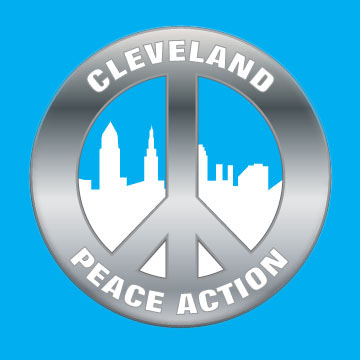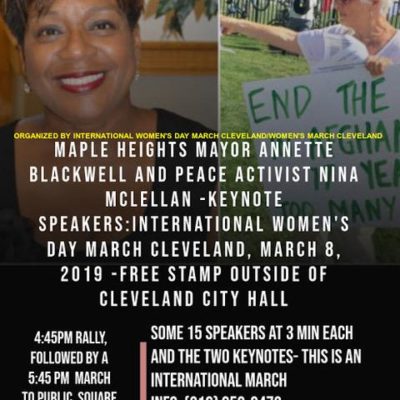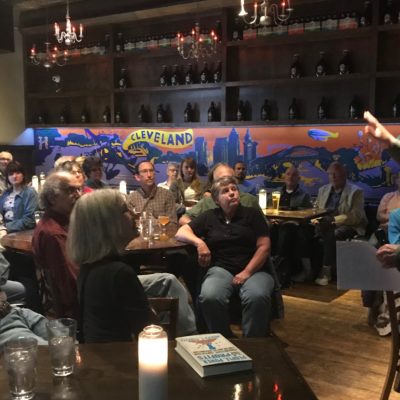By Mark Weber
In 1970, within the tiny Socialist Party of the United States, there was a fierce debate over what was then called “realignment.” The realignment forces led by Michael Harrington (1928-1989) argued that third parties were never going to be a winning strategy for the democratic left. Harrington argued that the left should pour its energies into working within the Democratic Party so that the party would be pushed to the left policy issues. Harrington’s position was adopted by the Socialist Party. However, within two years the venerable old Socialist Party (founded in 1901) would split into three factions. Harrington’s faction became the Democratic Socialist Organizing Committee (DSOC) which later merged with much of the New American Movement (NAM) to form the Democratic Socialists of America (DSA). Following the first Bernie Sanders campaign in 2016, the membership of DSA soared until presently it is around 65,000. It is by far the largest socialist organization on the left and has a number of its members sitting in Congress. Now, more than 50 years after Mike Harrington wrote about realignment in his book, Toward a Democratic Left, the question still remains: what about the Democratic Party?
In 1970, within the tiny Socialist Party of the United States, there was a fierce debate over what was then called “realignment.” The realignment forces led by Michael Harrington (1928-1989) argued that third parties were never going to be a winning strategy for the democratic left. Harrington argued that the left should pour its energies into working within the Democratic Party so that the party would be pushed to the left policy issues. Harrington’s position was adopted by the Socialist Party. However, within two years the venerable old Socialist Party (founded in 1901) would split into three factions. Harrington’s faction became the Democratic Socialist Organizing Committee (DSOC) which later merged with much of the New American Movement (NAM) to form the Democratic Socialists of America (DSA). Following the first Bernie Sanders campaign in 2016, the membership of DSA soared until presently it is around 65,000. It is by far the largest socialist organization on the left and has a number of its members sitting in Congress. Now, more than 50 years after Mike Harrington wrote about realignment in his book, Toward a Democratic Left, the question still remains: what about the Democratic Party?
Now, let us turn our attention to the 2020 election and beyond. In 1970, the Democratic Party of Harrington’s day, was a loose coalition of urban machines, people of color, a Southern “Dixiecrat” wing, and the labor movement. On the National level and outside the South, the Democrats stood for a variety of social democratic measures like national health insurance and no-tuition college education. Labor backed the Democrats and Business backed the Republicans. Fifty years later the political landscape has changed almost beyond recognition.
The 2020 election was the most expensive in American history. According to Open Secrets, it cost about $14 billion up and down the ballot, which was about twice as much as what was spent in the 2016 election. For their narrow victory, the Democratic Party outspent Republicans by a margin of $6.9 billion to $3.8 billion. Deregulated “outside” donations, mostly from very wealthy individuals, came to about $3 billion which mostly came through Super PACs. The two major parties themselves raised another $3.6 billion, mostly from wealthy people. In contrast, spending by the labor movement and by various “social welfare” groups barely passed the $100 million mark. Only about 22% of all donations to candidates came from those who gave $200 or less.
In other words, the rich paid for the 2020 election and it is they who will be its principal beneficiaries.
We have seen a kind of “realignment;” although not the kind that Mike Harrington envisioned. The Democratic Party has made significant inroads into Silicon Valley entrepreneurs and Wall Street hedge fund managers; while many nonunion white workers switched to the GOP. The Democrats were ensured Silicon Valley backing after Bill Clinton gave the high-tech big shots what they most wanted: patent and copyright protection for their income along with financial deregulation. So the realignment has sent white workers to the GOP while more and more well-to-do voters have switched to the Democrats. The old-fashioned union and working-class families that once were the backbone of the Democratic Party have shrunk in number; while new support comes from affluent suburbanites and the wealthy.
Some on the left have always demanded a third party that would compete with the Democrats and be more progressive on issues like Medicare for All, and the Green New Deal. However, while many people say they would back a third party, no third party (except for the Green Party) has yet to emerge. Even during the Depression (1929-1941) no third party was able to compete and be a force. Third parties must deal with undemocratic state election laws, lack of money, and, most important, lack of a base. This is unlikely to change in time for 2022 or 2024.
As we recover from the 2020 election, those of us on the left must face the fact that the white working-class support for the GOP is up; while support from the wealthy for the Democrats is also up. This means that the Democrats will hew to the center so as to not alienate its new wealthy backers.
I suggest that we need to keep this new partial class shift in the two parties as we plan our political work and our outreach to both elected officials and candidates.
Mike Harrington died of throat cancer in 1989. No doubt he is turning over in his grave.



Leave a Comment